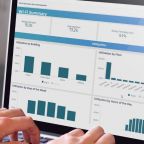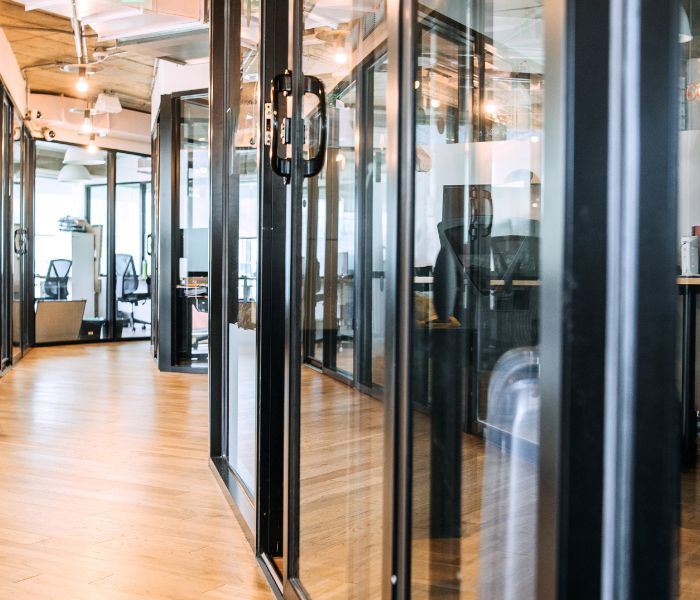The global pandemic turned the workplace upside down. The way people and organizations look at work has changed permanently. Many veteran real estate and facilities management professionals observe that during their careers, they’ve never seen a period of such great change take place at such a rapid pace.
Consequently, digital workplace transformation has progressed at a blistering pace across most organizations over the past two years. As the pandemic forced businesses to embrace work-from-home (WFH) on an unprecedented scale, both employers and employees discovered it offered many benefits. In fact, 80% of workers want the continued option to work from home at least part of the time.
As companies move into new models for the workplace, they will need to make data-driven decisions. Data will come from many sources across the organization, including facilities management, accounting and human resources. Companies need good digital infrastructure in place to gather, organize, manage and analyze this underlying data. Workplace Management Solutions will provide the data set to drive strategic decision making.
What Is the Digital Workplace?
Digital transformation of the workplace is a broad and complex concept that applies to the entire organization. For example, when considering digital solutions that enhance the employee experience, this guide will focus on solutions centered on experience with the workplace itself, such as way-finding kiosks and mobile desk reservation apps. But there’s a larger employee experience to consider—especially in a hybrid workforce. Ultimately, all departments play a hand in the digital workplace.
Technology Powers the Digital Workplace
More than half of businesses surveyed either know they aren’t prepared for facilities management in the digital workplace, or they aren’t certain they are prepared. Let’s explore some of the digital solutions that will help facilities and real estate managers advance and support the hybrid workplace.
Integrated Workplace Management System
To support the digital workplace, organizations need a workplace management system to centralize data about space and the real estate portfolio. Spreadsheets won’t suffice to drive true digital transformation.
Having access to real-time, accurate data enables facilities and real estate professionals to deliver better service, reduce costs and improve performance portfolio-wide. The workplace management system should house the physical space inventory, including CAD plans and digital floor plans. The space inventory should also contain information about departments and people assigned to each space. In some cases, organizations might want building information modeling (BIM) such as a digital twin—a virtual digital copy of a building.
Critically, the workplace management system needs to integrate with all sources of high-value workspace and facilities information. This includes badge swipe data, sensor data, HR data, and other sources. The system should be able to bring multiple data sources into your strategic workspace planning in a meaningful way.
Desk Booking
In a hybrid workplace, some employees who work predominantly in the office may have assigned workspaces while others use unassigned seating when they come in. Unassigned seating needs a desk booking system or a sensor solution to allow employees to find available workspaces and see where others are working that day. Unexpected drop-ins need to be able to locate or reserve a space on-site To keep the experience contactless, enable desk reservations via a mobile app and let employees check in with a QR code on their phones.
Room Booking
Employees also need to be able to find and reserve focus rooms and collaboration spaces. Meetings may be arranged from home or onsite at a desk or on the go. Make the reservation experience seamless by offering it via a mobile app, web interface, or extension in the email system. For ad hoc meetings, employees should also be able to walk down the hall, and instantly identify an available room via LED panels with color indicators for availability status. The room can be booked on the spot via the panel itself or a QR code. Sensors and digital displays make this easier by showing room availability, with real-time updating to release a reservation if no one shows up. Just as with desk booking, contactless technology is the goal. Use badge swiping to start the meeting and sensors to auto-release the space if the room is not in use.
With the pace of digital workplace transformation accelerating and the competition to attract and retain employees heating up, organizations have no time to lose in adopting digital and hybrid workplace strategies. Every organization needs to find its own unique balance of flexibility versus consistency and its best mixture of collaborative versus individual workspaces to meet employee needs.
Workplace transformation will be an iterative process of making changes, measuring results, listening to employees and improving the plan. Organizations will need workplace data and new technology—in order to embrace a post-pandemic hybrid workplace that incorporates working remotely with working onsite in different kinds of workplace designs.












